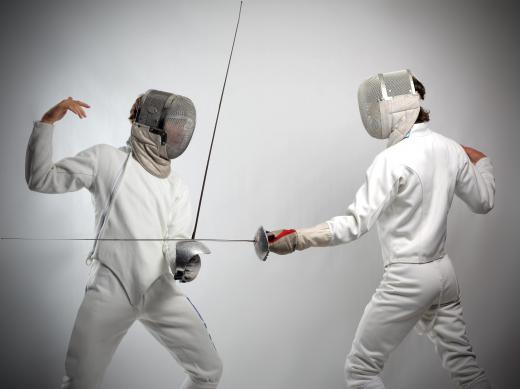Haidong Gumdo is a term used to describe a couple of slightly differing styles of Korean sword martial arts. Haidong Gumdo is also sometimes referred to as Haedong Kumdo, and derives from a standard style of Korean Kumdo fighting. The term was coined in 1982, and since then has grown into a rather large fighting technique, with a couple of major organizations that practice their own styles and have their own regulations for combat.
Korea has had complex martial arts forms for thousands of years, and they have always been an important part of the culture. Until about a century ago, the majority of these martial arts forms were weapon forms, like Haidong Gumdo, and it is only in the recent past that unarmed martial arts techniques have begun to gain popularity. In modern Korea, martial arts are an important part of the culture, and there has been a resurgence of styles like Taekkyeon, Hapkido, and Tang Soo Do.

Kumdo is one of these styles, and is a discipline of fencing, similar to the Japanese form of kendo. The name, like kendo, means literally the way of the sword, and is focused on swordsmanship. Early sword work owed a great deal to Chinese forms, many of which were developed directly to counter the fighting style of Japanese pirates. Over time, Korean sword arts diminished in popularity, both as a result of a Confucian system that devalued military prowess in relation to academic prowess, and the development of modern weaponry that rendered swords largely obsolete.
In the late-19th century, however, kendo was brought over to Korea, primarily as a way to train the police force and parts of the military. During the Japanese occupation, no traditional martial styles were allowed to be taught or practiced in Korea, so kendo and judo largely supplanted the native styles. Kendo formed the basis of the new Korean physical education system at the beginning of the 20th century, and when the occupation ended in 1945 kumdo flourished even more.
Although Haidong Gumdo undoubtedly owes a fair amount of kumdo, it is a rather distinct martial style. There are two main organizations that practice Haidong Gumdo: the Daehan Haidong Gumdo Federation, run by Kim Jeong-Ho, and the Hanguk Haedong Gumdo Federation, under Na Han-Il. It is generally claimed that Haidong Gumdo has its direct lineage from a martial art practiced by warriors known as the Samurang, trained by the master Seolbong. Although no historical record of this group of warriors or their master exists, it is nonetheless held to strongly as an origin story for the form.
Like many sword martial arts, Haidong Gumdo has a number of basic techniques, which are undertaken with various weapons, depending on the skill level. Beginners use a simple wooden sword, the mokgum, intermediate practitioners use a bamboo sword, the chukdo, and advanced students use weighted weapons and wear protective armor. Various forms, many derived from gicheon, are practiced, as is step sparring, cutting techniques, and the building up of energy, known as qi gong.
